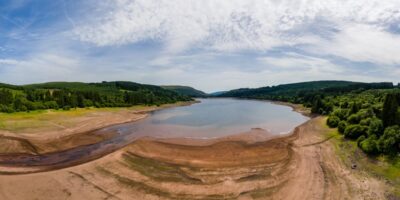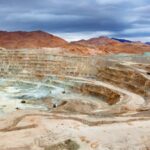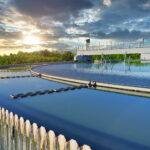Higher temperatures and changes to other climate variables are leading to sea level rise as well as changes in wave climate, coastal environments, and the availability and quality of water for irrigation and other water demands. An increased hazard of extreme events such as storms, heavy rainfall and periods of drought and water scarcity is also expected.
Responses to climate change are twofold – and they must go hand in hand. They include mitigation of the high concentrations of greenhouse gases and adaptation of human systems to changing climatic conditions.
The DHI ‘Water Resources Climate Change Guidelines’ describes the steps to achieve sustainable adaptation. It also includes an FAQ on climate change. We share some interesting facts from the guide.
- What is meant by climate change?
The climate system is dynamic and always changing. However, ‘Climate Change’ is a term that is now used to refer to the accelerated changes within the climate system resulting from anthropogenic alterations of atmospheric composition. The shift in the global energy balance caused by increasing concentrations of greenhouse gases leads to altered patterns of climate across the globe. Changes do not necessarily occur linearly over time, nor do they occur uniformly across the globe.
- Can global warming be true even if we had a cold winter?
Global warming refers to the overall increase in the net incoming radiation to the planet as a whole (as a result of the changed composition of the atmosphere). This incoming energy is redistributed around the planet by the atmosphere and oceans, which drive the climate system and create varied patterns of heat and moisture across the globe. A cold winter in one part of the world is not contradictory with average global warming.
- Why are we planning for climate change? Shouldn’t we focus our efforts on trying to stop it?
Previous anthropogenic interventions mean that we are already tied to a changed climate system and there is no way of avoiding accelerated changes in temperature, rainfall and sea levels. Thus, in addition to trying to limit the change by reducing emissions we should be considering how to manage climate risks where appropriate.
- If climate change isn’t going to happen for a long time, why plan it for now?
Climate change is not just a thing of the future. Whilst short-term changes may be less extreme than the projected 2100 changes, change is already occurring and risks over the next 50 years (which may be the design lifetime of infrastructure) may be significantly different from today’s risks. This is why flexible adaptation to climate change risks is so important, and is one of the main reasons for writing these guidelines.
- What climate change signals can be seen?
There is strong evidence of climate warming in recent decades from observations of increases in global mean air and ocean temperatures, melting of snow and ice, and rising sea levels. The latest report from the International Panel on Climate Change states that Greenland and Antarctic ice sheets have been losing mass as have most glaciers in the world, and Arctic sea ice and spring snow cover also continue to decrease. They also conclude that, sea level rise since the mid 19th Century has been higher than the rate for the previous two millennia and has risen on average by 0.19m since 1901.
Although no globally consistent change in precipitation is observable, there is substantial evidence of zonal changes, such as the increase of average precipitation in the Northern Hemisphere mid latitudes over land that has occurred since the 1950s. Increases in the frequency of heavy precipitation events have been observed in Europe and North America, and increases in the frequency and severity of droughts have been observed over much of the Northern Hemisphere. Attribution studies suggest that these changes exceed what can be explained by the natural variability of the climate system.








